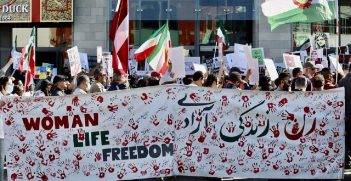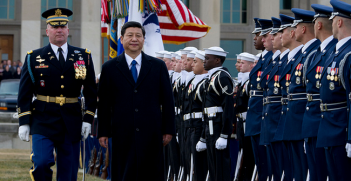Supporters of an Australian Iron Cartel Have a Monopoly on Bad Economics

Intervening in the Iron Ore market to establish a cartel would be an ill-advised strategy as Australia’s decade of resource-driven prosperity slows.
As Australia moves away from a decade of resource-driven prosperity, it is even more important that it avoid mistakes that previously might have been papered over by the boom times. Yet there are loud voices calling for the mistakes of the past to be made again. One of the loudest is that of Australian mining company Fortescue’s non-executive chairman, Andrew ‘Twiggy’ Forrest.
One would think that Forrest shouldn’t have too much to complain about. Fortescue’s March quarterly update reported that the company had managed to cut its delivered operating costs to US$48 per dry metric ton (at 62 per cent ferric content), a stellar decrease from the US$107 reported a year earlier.
But the problem for the company is that the iron ore price has been falling faster than the cuts in operating costs. For seven of the first eight days of April the price of iron ore fell below Fortescue’s operating costs and the Australian budget assumes iron ore will trade at Fortescue’s US$48 per ton operating costs over 2015–16.
In 2013, Australia exported around 611 million tons of iron ore worth around AU$75.3 billion (US$61.2 billion). Last year, iron ore exports expanded by 23.5 per cent but the fall in ore prices saw total earnings down marginally, at AU$74 billion (US$60 billion). Some have labelled this immiserising growth, where output rises beyond the opportunity costs of resources used in producing it. For producers like Fortescue, who will struggle to cover costs at current prices, immiseration is reality. But for the big, intra-marginal, established suppliers — such as BHP Billiton, Rio Tinto and Vale — expanding supply delivers revenue above costs and continuing profit.
Any reprieve from sub-US$50-a-tonne prices for Fortescue is likely to be only temporary. Iron ore majors, Rio Tinto, BHP Billiton and Vale, are all planning to bring more low cost iron ore to the market.
The continued profitability of low cost expansion for BHP Billiton, Rio Tinto and Vale in the new iron ore price environment is not a good sign for Fortescue’s and other marginal producers’ long-run viability. Fortescue’s share price reflects this fact, decreasing from 6.02 cents on 21 February 2014 to 2.57 cents on 11 May 2015, after bottoming out at 1.82 cents on 10 April 2015.
In response to Fortescue’s crisis, Forrest has taken to the political hustings, hawking everything from a managed iron ore cartel to the government revoking the licenses of Rio Tinto and BHP Billiton. But Forrest’s proposed remedies are short sighted and would be in no one’s interests but his own. The nature and the history of Australia’s place in the international iron ore business suggest that the proposals would do serious damage to Australia’s longer-term economic interest.
Put simply, Forrest is effectively arguing for a managed cartel — where each Australian iron ore producer would export a pre-determined amount of product. Australia actually tried government imposed price intervention against Japanese iron ore buyers in the 1970s and got away with it, as you can — but only for a brief moment. Australia also traded on its monopoly power in the Japanese wool market in the 1930s, with less short-term success as Japanese buyers withdrew from the Australian market. Such intervention is certainly a strategy for cutting yourself out of valuable commodity markets in the medium to long term.
Protecting Forrest against his bad investment decisions by controlling supply is a loser’s game unless policymakers believe that they can take the world’s other major suppliers with them. That would be anti-competitive and potentially politically dangerous to the regime that is the foundation of reliable international markets. Australia’s Treasurer, senior economic ministers, opposition spokesman and industry associations, including the ACCC and the Minerals Council of Australia appear to understand that.
Over the longer run the iron ore market is highly contestable. An uncompetitive intervention in the market will have negative consequences for both Australia’s iron ore revenue and other sectors important to the transition away from iron ore-based prosperity.
Just as the iron ore pricing interventions by the Whitlam government in 1973 catalysed the development of Brazil’s rich iron ore endowments, and the 2009 intervention by China Iron and Steel Association in the benchmark price negotiations led to the collapse of benchmark negotiations (which we estimate cost Chinese buyers around US$290.7 million per month for their trouble), a new intervention could be catastrophic to Australia’s future prosperity.
Australia does not have a monopoly on iron ore supply to Asia. The drastic reduction that has taken place in bulk shipping costs means that Australia’s relative geographic advantage to the Asian market is also worth less than ever before.
Intervening in the market by establishing a cartel would be an ill-advised strategy. It might save Fortescue, but it would take the skin off the country. Any Australian iron ore market intervention will likely have a negative impact on demand for Australia’s iron ore and, more importantly, also damage its relationship with not just China, but also South Korea and Japan. These relationships are imperative to navigating the impending economic storm Australia faces as it weans itself off the red-dirt rents it has been so reliant on over the last decade.
Let’s hope that policy leaders of all stripes twig to Twiggy’s tricks, and show regional partners that Australia will be in business with them for the long haul.
Luke Hurst is a Research Fellow at the East Asian Bureau of Economic Research, Crawford School of Public Policy, The Australian National University. This article was originally published in The East Asia Forum on 24 May 2015. It is republished with permission.





